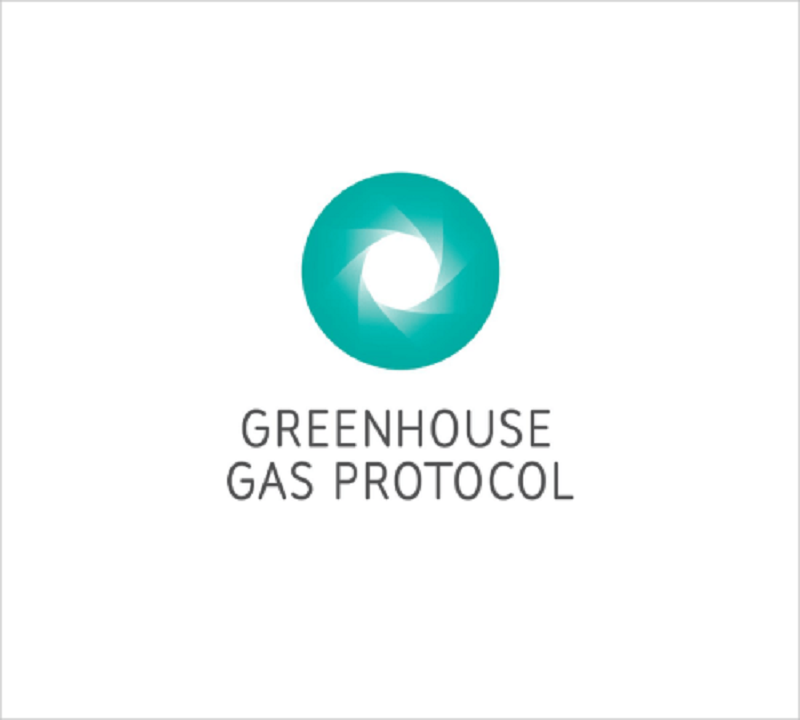General
GHG Protocol Standards that You Should Know

The earth is warming up faster than any other moment in the past, and it is time to rethink our strategies for cooling it down. During the 2015 Paris Climate Conference (COP21), countries committed to limiting further global warming by cutting down greenhouse (GHG) emissions.
Corporates have a bigger role in addressing global warming, and their leadership needs to understand the GHG protocol to help them measure and manage their emissions.
So, how well do you know the GHG protocol? Here is a deeper look, outlining the scopes of GHG emissions and the main standards that you should know about.
What is the GHG Protocol?
Greenhouse Gas Protocol is an organization that was created in 1998 through a partnership between World Business Council for Sustainable Development and World Resources Institute. The protocol was developed to help companies cut down their emissions by setting standards for them. As we are going to see shortly, the GHG protocol provides standards, tools, and training for companies and governments on the best ways to manage emissions.
The protocol operates closely with industry associations, governments, businesses, and NGOs, to create standardized frameworks for emission reduction and reporting to stakeholders. Notably, these standards have evolved over time to cater to the complex problem of global warming.
For example, the standards do not just help companies to cut down their carbon footprint from within but also the entire value chain.
GHG protocol is used by a wide range of companies, and your company is also likely to fit well. Nine out of ten Fortune 500 Companies reporting to CDP use the GHG Protocol. To apply the protocol in your company, make sure to get the right ESG reporting framework and expertise from Diginex.com.
GHG Protocol: The Three Scope Emissions
One of the things that make the GHG protocol famous is its emission classifications. The protocol classifies them into three:
- Scope One: These are emissions that result from the internal operations of a company.
- Scope Two: These emissions are generated through the consumption of purchased steam, heat, cooling, and electricity.
- Scope Three: These are indirect emissions, mainly resulting from the extended supply chain. Note that these emissions must include both downstream and upstream operations.
We must indicate that measuring Scope 3 emissions and to some extent, Scope 2 Emissions is not a simple task. This is why you should consider working with experts at Diginex.com.
GHG Protocol Standards
Here are the main GHG protocols and who they are prepared for:
- Corporate Standard: This protocol is meant for organizations preparing corporate-level GHG emissions inventory. The lovely thing about this standard is that it not only helps companies cut down emissions but also comes in handy, helping them increase transparency.
- GHG Protocol for Cities: Cities are major carbon emission sources, contributing about 75% of all GHG emissions per year. This standard is used to provide for a consistent and transparent measure of GHG emissions in urban areas/ cities. Furthermore, it allows for benchmarking via comparable data.
- Mitigation Goal Standard: Unlike the first two standards above, the mitigation standard is used for developing national and subnational mitigation objectives. It was created to help follow policies and actions set for cutting down GHG emissions.
- Product Standard: With this standard, you are able to look at the entire lifecycle of a selected product. Then, you can notice where more emissions are taking place and then identify opportunities for cutting down emissions.
- Corporate Value Chain Standard: This standard sets out the guidance for companies to evaluate their GHG in their entire value chain. It is very useful for helping companies look at the emissions outside of their operations or walls.
As you can see, GHG protocol is an important pillar in ESG sustainability reporting. To apply it correctly, you need to ensure that the right process is followed, from company review to report generation. It can be pretty challenging, and the best way to get it right is by working with experts. Visit Diginex.com now to learn more about GHG protocol, its application, and optimizing the associated benefits.
General
Lagos to Get New Building Code in 2025

By Adedapo Adesanya
The Lagos State Government has expressed its readiness to get a brand-new Building Code next year, to achieve the high-performance standards needed to make Lagos a sustainable and Smart City.
The government’s readiness was disclosed at the Lagos State Executive Council Retreat on the Domestication of the Lagos Building Code, organised by the Office of the Special Adviser on e-GIS and Urban Development, held at Ikeja GRA on Wednesday.
Speaking during the retreat, Lagos State Governor, Mr Babajide Sanwo-Olu emphasised the need for more collaboration among all the ministries and agencies in the built sector, to ensure the state development in line with global best practices.
He said the motive behind the Lagos Building Code is to have a building regulation that would make Lagos much more resilient.
“We (Lagos State Government) are the first to domesticate the National Building Code, which is the creation of the Federal Government. We are not doing anything outside the vision at the sovereign and sub-sovereign levels. But what is unique about our own is the fact that all the cabinet members see the need to have an input because it would be an outcome that would affect lives and different ministries and agencies.
“So, there is a need for everybody to have a say, and at the end of the day, collectively we will resolve to have a way.
“What we are trying to do is for Lagos State to do what is obtainable internationally: have a building regulation in which we have a standard of construction in design, manner of land use occupancy, and use of building materials, which we believe would eventually improve and help with health, safety, and occupancy issues.
“It is all about building sustainably, making Lagos a lot more resilient and able to absorb shock in the future and able to stand in the comity of developed cities and city-states as we see in various parts of the world,” he said.
The Special Adviser to the Governor on eGIS and Urban Development, Mr Olajide Babatunde, stated that the Lagos Building Code is to complement the existing regulatory framework and provide a comprehensive solution to the challenges of land use, physical development, and urban planning.
Mr Babatunde said the Lagos Building Code will regulate building control, planning permission, and address the issues of setbacks; take care of the safety and sustainability of the environment; and also prevent the collapse of buildings.
“We have been working on the domestication of the National Building Code, and by next year, we are going to have our own brand-new Lagos Building Code. We have worked with professional bodies and people from academia, market women, and the public in general, and through a participatory approach, we can come out with a document that is acceptable to everyone and useful to the entire state,” he said.
Also speaking, the Special Adviser to the Governor on Infrastructure, Mr Olufemi Daramola, described the Lagos State Building Code initiative by the Babajide Sanwo-Olu administration as the next step to Green Lagos that will enable the state to plan buildings properly and ensure durable infrastructure in the state.
During the retreat, members of the Lagos State Executive Council brainstormed and advocated aggressive sensitisation for residents of the State on the Lagos Building Code before implementation.
General
Apostle Femi Lazarus Emerges Most Streamed Podcast in Nigeria on Spotify

By Modupe Gbadeyanka
A report released by Spotify has revealed that in 2024, Apostle Femi Lazarus was the most streamed podcast on its platform, closely followed by Motivation Daily by Motiversity.
Podcasts are one of Africa’s favourite ways to tell stories. With almost 4 billion minutes of podcast audio played in Sub-Saharan Africa in 2024, the continent’s appetite for this content is loud and clear.
South Africa, Nigeria, and Kenya listened to the most shows this year, with South Africa contributing over 2 billion minutes. If you started playing podcasts on one device today, it would make for about 30 centuries of listening.
“The numbers don’t lie. Podcasting is here to stay because it lets creators take control of their narratives and tell these stories on their terms while bringing their community along for the journey,” the Sub-Saharan Africa Podcast Manager for Spotify, Ncebakazi Manzi, stated.
Motivational shows around issues like managing finances, relationships, personal goals and health remain popular across the three leading countries. Shows like “The Diary Of A CEO with Steven Bartlett”, “Motivation Daily by Motiversity” and “The Success Addicted Podcast” have attracted listeners who want to get their lives in order and learn from the stories of inspirational people.
Audiences in Nigeria and South Africa embrace shows about spirituality. “Christian Motivation” had one of the most shared episodes in South Africa while “Apostle Joshua Selman” maintained his popularity in Nigeria for another year. As the continent’s second-largest podcast market, Nigeria listened to 700 million minutes in 2024 and it created half of the new shows published in Sub-Saharan Africa this year.
Even though spirituality dominated Nigeria’s top charts, the continued popularity of shows like “I Said What I Said” and “The HonestBunch Podcast” tell us that listeners also want conversation-style shows. Listeners in Kenya and South Africa also showed an affinity toward these shows.
A good laugh with friends
The “ShxtsnGigs” podcast, an opinion show hosted by two best friends James and Fuhad, tapped into audiences’ hunger for conversational shows. The humorous podcast has made its way to the top charts in six of the top 10 podcast-playing African countries. In Kenya, The 97s Podcast has been inspired by this approach where funny and frank chats between hosts Trevor, Frank and Dante have led the podcast to take the number-one spot in the country for the first time.
Kenya’s broader listening data shows that relationships are a meaningful taking point. Seven of the 10 most shared episodes in the country discuss love, sex lives and dating. Julia Gaitho’s “So This Is Love” holds three out of the top five most shared podcast episodes in the country. Her interviews resonated because she draws lessons from her guest’s stories about lost lovers.
Some listeners just wanted to laugh through the pain. Ensemble shows like “Mic Cheque Podcast” and “The Sandwich Podcast” made Kenyans feel like they were hanging out with a close circle of friends. When difficult topics come up, moments of infectious laughter help lighten the mood.
Women creators like Murugi Munyi, Julia Gaitho, Sharon Machira and Lydia K.M. take this comedic approach to a new level on shows like “The Messy Inbetween” and ‘It’s Related, I Promise’. This genre contributed heavily to the country’s 400 million podcast minutes streamed in 2024.
Below are the most streamed and shared podcasts for the year;
|
TOP STREAMED PODCASTS IN SOUTH AFRICA |
TOP STREAMED PODCASTS IN NIGERIA |
TOP STREAMED PODCASTS IN KENYA |
|
2. Motivation Daily by Motiversity 3. Success Addicted Podcast with the voice of Earl Nightingale ; Napoleon Hill ; Jim Rohn and many more |
|
TOP SHARED PODCAST EPISODES IN SOUTH AFRICA |
TOP SHARED PODCAST EPISODES IN KENYA |
TOP SHARED PODCAST EPISODES IN NIGERIA |
|
|
|
General
Watt Renewable Secures $15m Loan for Hybrid Solar Power Plants in Nigeria

By Dipo Olowookere
A $15 million debt facility has been obtained by Watt Renewable Corporation from the AfriGreen Debt Impact Fund to finance hybrid solar power plants to be built and operated by the former, especially in Nigeria.
WATT intends to use the projects to serve commercial and industrial clients in Nigeria, particularly in the telecommunication and financial services sectors.
By integrating solar hybrid solutions, the firm aims to significantly reduce diesel consumption and CO2 emissions, enabling its clients to achieve substantial energy cost savings while promoting environmental sustainability.
As a pioneer in renewable energy solutions, WATT continues to drive innovation in Nigeria’s energy sector.
The company’s robust roll-out plan includes deploying hundreds of hybrid solar power sites nationwide to meet the growing energy demands of commercial & industrial clients.
This strategic expansion aligns with WATT’s vision to revolutionize energy access across Africa, enabling sustainable development and reducing reliance on fossil fuels.
The funds from AfriGreen provide the critical capital needed to accelerate WATT’s ambitious projects, strengthening its market position and empowering businesses with reliable and affordable energy solutions.
Business Post gathered that to mitigate the currency risk for WATT in the event of devaluation of the Nigerian Naira, AfriGreen is offering a local currency facility that matches the payment structure of the power purchase agreements.
“We are thrilled to partner with AFRIGREEN on this transformative journey to expand reliable and sustainable energy solutions across Africa.
“With this support, it enables us to accelerate our shared mission of providing hybrid solar power to businesses, reducing carbon emissions, and supporting economic growth while enhancing energy security for our clients,” the Managing Director of WATT, Mr Oluwole Eweje, said.
“We are delighted to support WATT in rolling out hundreds of hybrid sites across the country.
“This represents another key transaction for AFRIGREEN in Nigeria. The combination of high energy prices, good solar irradiation, and strong demand from industrial and commercial energy users makes this market particularly attractive for companies like WATT.
“By leveraging these favourable market conditions alongside WATT’s exceptional operational performance and a well-structured financing solution, we are setting the stage for a strong and lasting business partnership,” the Managing Director of AfriGreen, Mr Alexandre Gilles, stated.
-

 Feature/OPED5 years ago
Feature/OPED5 years agoDavos was Different this year
-
Travel/Tourism8 years ago
Lagos Seals Western Lodge Hotel In Ikorodu
-

 Showbiz2 years ago
Showbiz2 years agoEstranged Lover Releases Videos of Empress Njamah Bathing
-

 Banking6 years ago
Banking6 years agoSort Codes of GTBank Branches in Nigeria
-

 Economy2 years ago
Economy2 years agoSubsidy Removal: CNG at N130 Per Litre Cheaper Than Petrol—IPMAN
-

 Banking2 years ago
Banking2 years agoFirst Bank Announces Planned Downtime
-

 Sports2 years ago
Sports2 years agoHighest Paid Nigerian Footballer – How Much Do Nigerian Footballers Earn
-

 Technology4 years ago
Technology4 years agoHow To Link Your MTN, Airtel, Glo, 9mobile Lines to NIN










